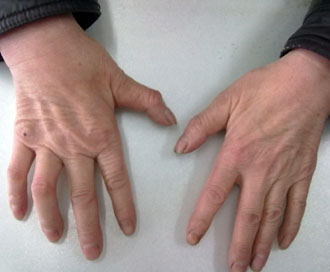
Introduction to
Muscular Atrophy
Muscle atrophy, or muscle wasting, results from loss of muscle tissue. Little or no physical exercise and a sedentary lifestyle are common causes of muscle atrophy, in this case called disuse atrophy. Other common causes of disuse atrophy include medical conditions that decrease mobility, such as rheumatoid arthritis (chronic autoimmune disease characterized by joint inflammation) or osteoarthritis (thinning and weakening of the bones), and injuries, such as broken bones and burns. The aging process often leads to slow but progressive muscle atrophy.
Muscle atrophy caused by a nerve problem is called neurogenic atrophy. Common causes include neuromuscular diseases, such as spinal cord atrophy, multiple sclerosis (disease that affects the brain and spinal cord causing weakness, coordination, balance difficulties, and other problems), amyotrophic lateral sclerosis (ALS, also known as Lou Gehrig’s disease; a severe neuromuscular disease that causes muscle weakness and disability), or Guillain-Barre syndrome (autoimmune nerve disorder). Diabetic neuropathy, nerve damage associated with diabetes, may also lead to atrophy of the muscles.